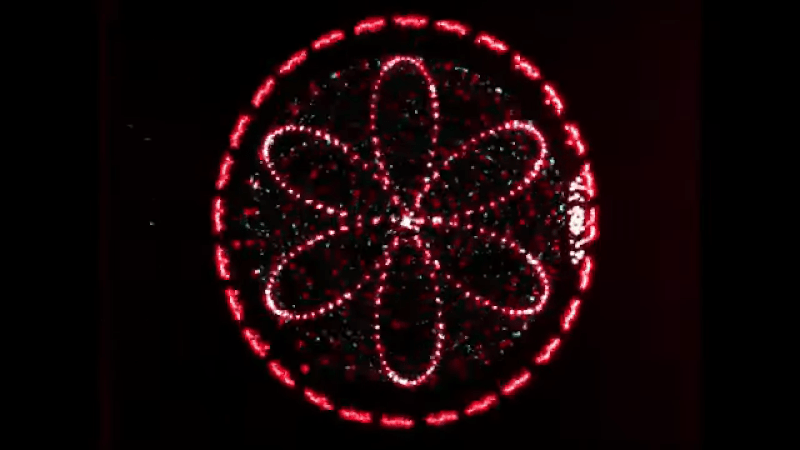[Classic Microcomputers] read in a book that there was a computer-generated film made in the late 1960s, and he knew he had to watch it. He found it and shared it along with some technical information in the video below.
Modern audiences are unlikely to be wowed by the film — Permutations — that looks like an electronic spirograph. But for 1968, this was about as high tech as you could get. The computer used was an IBM mainframe which would have cost a fortune either to buy or to rent the hours it would take to make this short film. Now, of course, you could easily replicate it on even your oldest PC. In fact, we are surprised we haven’t seen any recreations in the demoscene.
The end credits list [John Whitney] working under an IBM research grant as the author of the film. The programming was by [Jack Citron], and it was apparently put together at the UCLA School of Medicine.
According to [Classic Microcomputers], the display was static and black and white, but animation on 16mm film and color filters made it more interesting.
Was this the birth of the demoscene? Usually, when we watch old IBM videos, it is of the data center, not the data!
















I remember going, in the mid/late 70s, to a cinema screening of several of Whitney’s works, including Permutations. They were clearly ground-breaking, albeit a little tedious en masse.
My community college had a copy of the Whitney IBM movie. It was partly why I switched from art to computer science. The other was the presence of an HP pen plotter with unlimited student access. I discovered I could make art with computers and there was no going back. I did paint systems, animation systems, computer games and finally GIS. All at the intersection of art and computers. So… thanks John Whitney and Diablo Valley College and Clark Sturges (film teacher).
Great story :-)
Great video, but the background music is a bit annoying.
If you were a college student in 1968, you would have been subjected to all kinds of strange music breaking out in different directions, particularly eastern, which be exactly what you could expect to find in a student project film like this. And it certainly wouldn’t be something you would expect to hear on the radio. Everything was experimental, and you had to express your cultural hipness.
Filming this early CG (Computer Generated) video art required paying close attention to both the video and film camera’s respective frame rates and how the two interact (overlap) through aliasing.[1] A video of John Whitney’s 1966 film “Permutations” is up in at least one YouTube post.[2]
References:
[1] Aliasing
https://en.wikipedia.org/wiki/Aliasing
[2] John Whitney-Permutations (1966)
https://www.youtube.com/watch?v=BzB31mD4NmA
Brilliant, and some pretty complex patterns! This must take the crown as the first demoscene!
Neat! they invented a mind control device to make me want to turn off the video 30 seconds into watching! (the computer video part was awesome but i think they play that drum track to torture terrorists at the waterboarding place.)
Quiet tabla at a peak of minus 14dB. Most is very low in level, just saying it should have been a lot louder. Digital compression makes a mess out of the x-y display’s high temporal definition. I remember seeing some of this back then on some futurist TV program with my mother, “this is what music and art may be like in the future” she liked it. By 1970 I was hooking amped stereo audio to the deflection coils in TV’s and got a blue ribbon in a science and art exhibition in high school.
argh. Video would get a little way into the part showing computer visuals and youtube would just keep stalling with the buffering arrows. Closed browser, cleared things several times, but never could get it to play any further.
Is there a Hackaday comment Bingo card? We’d have filled out a lot of it already, with only 8 comments.
Though this video does predate the 555.